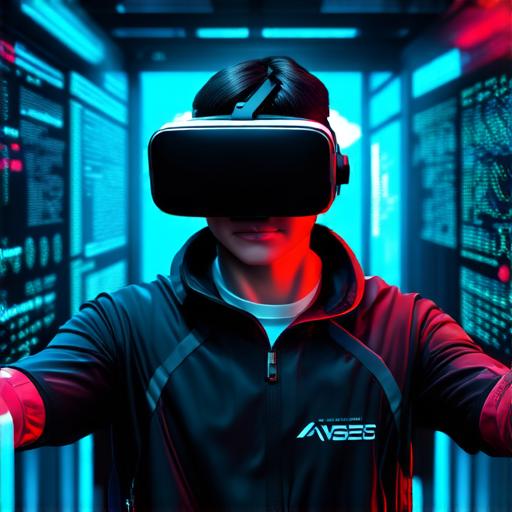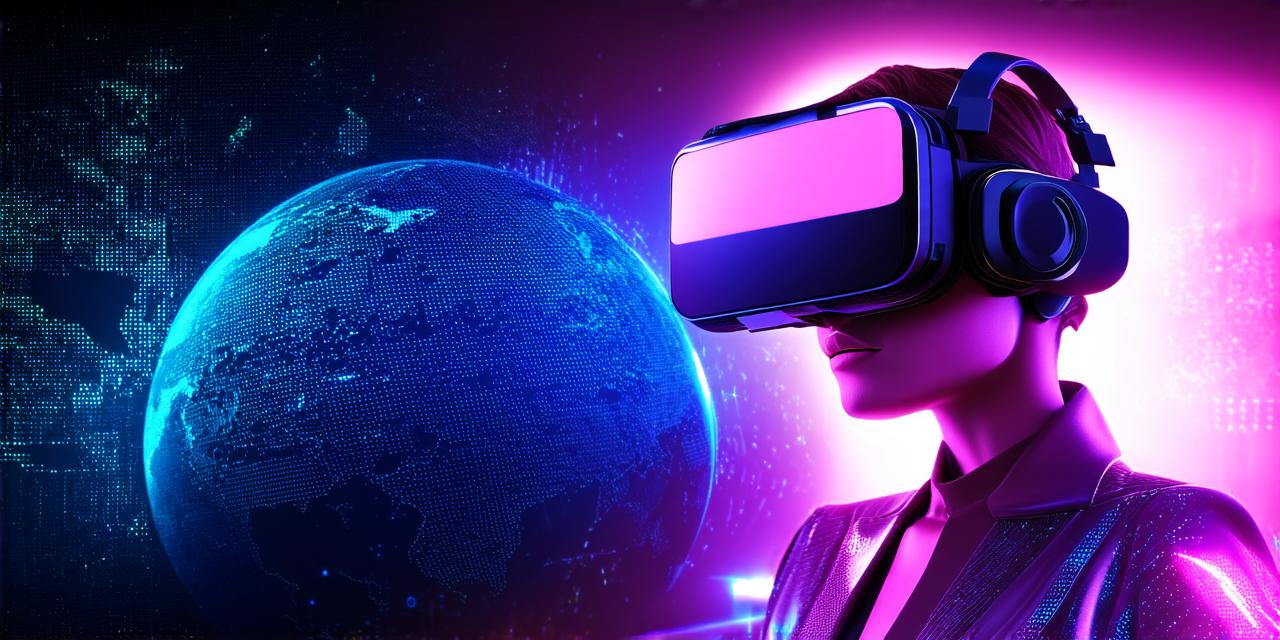Virtual Reality (VR) is a technology that creates an immersive and interactive experience for users by simulating a three-dimensional environment. It has been around for decades, but it’s only in the last few years that VR has become more accessible and affordable to consumers.
Virtual Reality Technology: A Brief Overview
The concept of virtual reality dates back to the 1960s when researchers first developed head-mounted displays (HMDs) that could simulate a three-dimensional environment. However, it was only in the last few decades that VR technology has become more sophisticated and accessible.
Today, there are various types of VR systems, including:
- Oculus Rift
- HTC Vive
- PlayStation VR
- Samsung Gear VR
- Google Cardboard
These systems use different technologies to create the illusion of a three-dimensional environment. Some use head-mounted displays, while others use projectors and screens. The most common technology used in VR is stereoscopic display, which creates two separate images for each eye, creating the illusion of depth.
Virtual Reality Applications: A Growing Market
Virtual reality technology has numerous applications across various industries, including gaming, education, healthcare, and tourism. Here are some examples:
- Gaming: VR has revolutionized the gaming industry by providing players with an immersive gaming experience that they can’t get from traditional gaming consoles. Games like Beat Saber, Half-Life: Alyx, and Skyrim Special Edition have become popular VR games that have captured the attention of gamers worldwide.
- Education: Virtual reality technology has the potential to revolutionize education by providing students with a more interactive and engaging learning experience. For example, students can take virtual field trips to different parts of the world or explore historical events in a more immersive way.
- Healthcare: VR technology is being used in healthcare to provide patients with a more immersive and effective therapy experience. For example, VR can be used for exposure therapy to treat anxiety and phobias, as well as pain management and physical rehabilitation.
- Tourism: Virtual reality technology has the potential to revolutionize the tourism industry by providing travelers with a more immersive and engaging travel experience. For example, travelers can take virtual tours of different parts of the world or explore historical sites in a more interactive way.
- Real Estate: VR technology is being used in real estate to provide buyers and renters with a more immersive and effective way to view properties. For example, buyers can take virtual tours of properties without having to physically be there.
Virtual Reality vs Augmented Reality: What’s the Difference?
Virtual reality and augmented reality (AR) are often used interchangeably, but they are different technologies with different applications. Virtual reality creates an immersive and interactive environment for users, while augmented reality overlays digital information onto the real world. Here are some examples of VR and AR:
- VR: Oculus Rift, HTC Vive, PlayStation VR, Samsung Gear VR, Google Cardboard
- AR: Pokemon Go, Snapchat filters, IKEA Place

Virtual reality technology has the potential to be more immersive and interactive than augmented reality technology. However, augmented reality technology has its own applications, such as in gaming and marketing.
Real-Life Examples of Virtual Reality Technology
There are many real-life examples of virtual reality technology being used across various industries. Here are some examples:
- Architecture: VR is being used in architecture to create more immersive and interactive 3D models of buildings and structures. For example, architects can take virtual tours of their designs and make changes in real-time.
- Training: VR is being used for training in various industries, including healthcare, military, and aviation. For example, pilots can train in a virtual environment without risking their lives.
- Marketing: VR is being used in marketing to create immersive and interactive experiences for customers. For example, car manufacturers can let customers take virtual test drives of their products.
- Entertainment: VR is being used in entertainment to create immersive and interactive experiences for viewers. For example, the BBC has created a VR experience that lets users explore the natural world.
- Education: VR is being used in education to provide students with a more immersive and engaging learning experience. For example, students can take virtual field trips to different parts of the world or explore historical events in a more immersive way.
Virtual Reality vs Real Life: Which One Is More Immersive?
The debate between virtual reality and real life has been ongoing for years. Some argue that virtual reality is more immersive than real life, while others argue the opposite. Here are some arguments on both sides:
- Virtual reality is more immersive than real life: VR technology creates an environment that is specifically designed to be immersive and interactive. This allows users to fully immerse themselves in the virtual world and forget about the real world.
- Real life is more immersive than virtual reality: Real life provides a wealth of sensory information that VR technology cannot replicate. For example, the smell of freshly baked cookies or the sound of birds chirping in the morning.
Virtual Reality vs Real Life: Which One Is More Important?
The importance of virtual reality versus real life is subjective and depends on personal preference. However, there are some arguments for both sides. Here are some arguments on both sides:
- Virtual reality is more important than real life: VR technology has the potential to revolutionize various industries, including gaming, education, healthcare, and tourism. It can provide users with a more immersive and engaging experience that they can’t get from real life. Additionally, VR technology can be used for training in various industries, which can improve safety and efficiency.
- Real life is more important than virtual reality: Real life provides a wealth of sensory information that VR technology cannot replicate. Additionally, real life can be unpredictable and full of surprises, which can make it more immersive than a virtual world. Furthermore, some argue that real life is more important because it teaches us valuable lessons about the world and ourselves.
Summary
Virtual reality technology has come a long way since its inception and has numerous applications across various industries. It has the potential to revolutionize education, healthcare, tourism, and more. While there is debate between virtual reality and real life, both have their own unique benefits and drawbacks.
